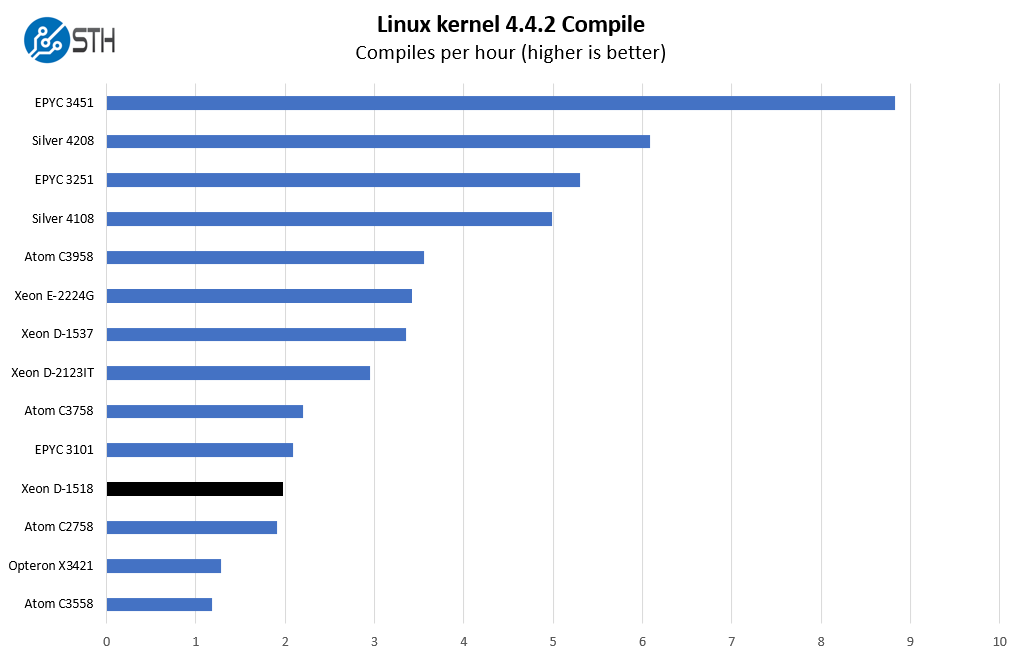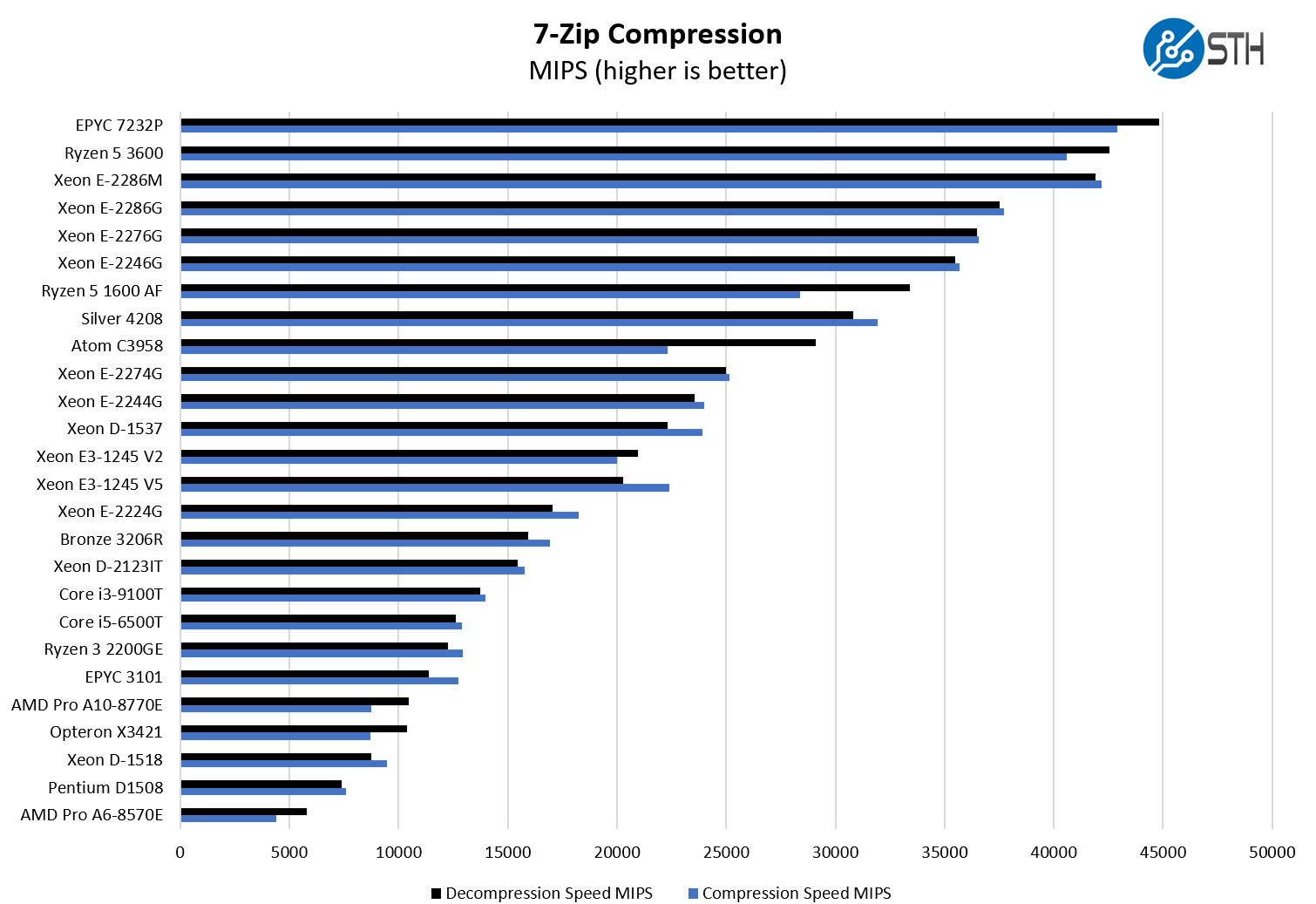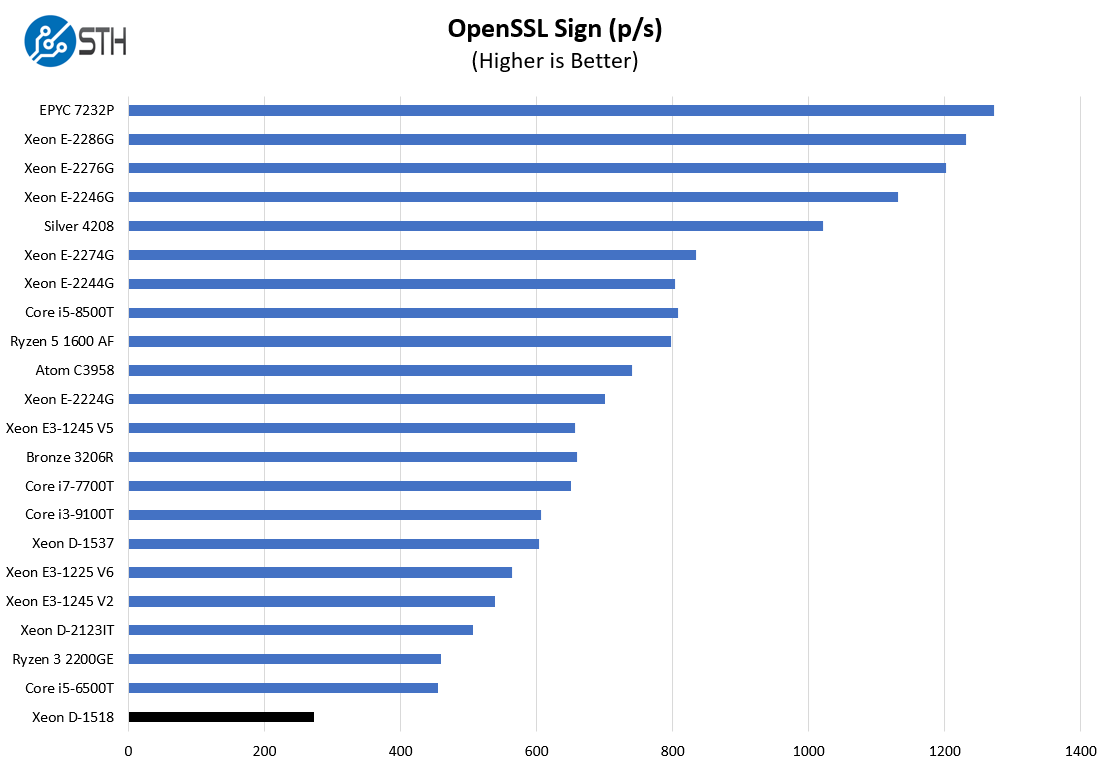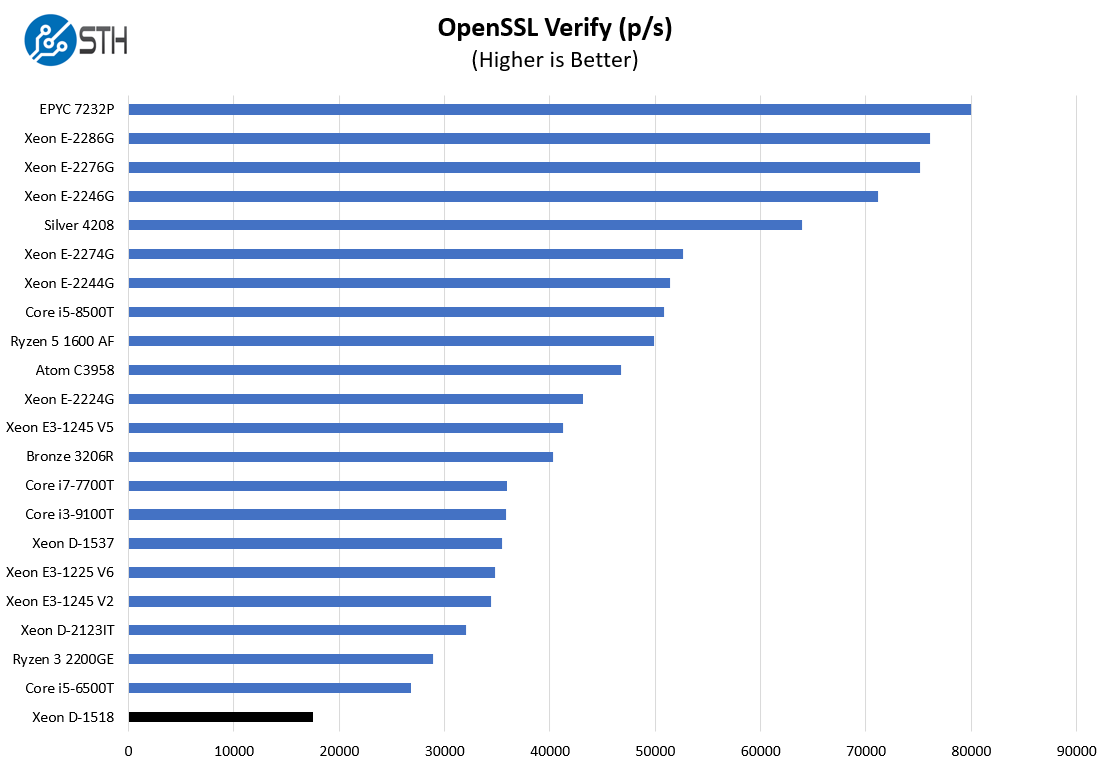HPE ProLiant EC200a Performance
Instead of going through the entire Linux-Bench test suite, we are going to show a few performance and power numbers here to give a general sense of performance. We actually planned to do storage testing, but then we realized that there was a huge variability in terms of what drives could be found in machines.
Python Linux 4.4.2 Kernel Compile Benchmark
This is one of the most requested benchmarks for STH over the past few years. The task was simple, we have a standard configuration file, the Linux 4.4.2 kernel from kernel.org, and make the standard auto-generated configuration utilizing every thread in the system. We are expressing results in terms of compiles per hour to make the results easier to read:

The Intel Xeon D-1518 is really showing its age here. It is designed to be an ultra-low-power SoC. At the same time, the EC200a is not using the full chip. As an example, it is not using the onboard 10GbE MACs. That limits just how much performance we can get out of a chip like this.
7-zip Compression Performance
7-zip is a widely used compression/ decompression program that works cross-platform. We started using the program during our early days with Windows testing. It is now part of Linux-Bench.

When we look to the Intel Xeon E-2224 in the HPE ProLiant MicroServer Gen10 Plus we see a massive performance boost. This is largely due to the TDP, but also the Xeon D-1500 series was an early 14nm chip based on Broadwell microarchitecture.
OpenSSL Performance
OpenSSL is widely used to secure communications between servers. This is an important protocol in many server stacks. We first look at our sign tests:

Here are the verify results:

It is a bit unfair comparing this lower-power part to some of the higher-power parts in our data set. Still, we wanted to show performance relative to some other options. We also wanted to show why we wish we could have found a TM200 with the Xeon D-1537 CPU as that offers significantly higher performance.
Next, we are going to look at power consumption before moving onto our key lesson learned and final words.




This seems similar in spirit to the recently reviewed HP EC200A.
This is superior to the EC200A along all the dimensions that one would be considering these units (primarily CPU performance, networking, IPMI licensing cost), but the latter has been available fairly cheaply used.
Now that it’s been a few years, what does everyone seem to be using this for? It’s almost like a mini/micro pc in a larger form factor so it can take bigger physical drives.